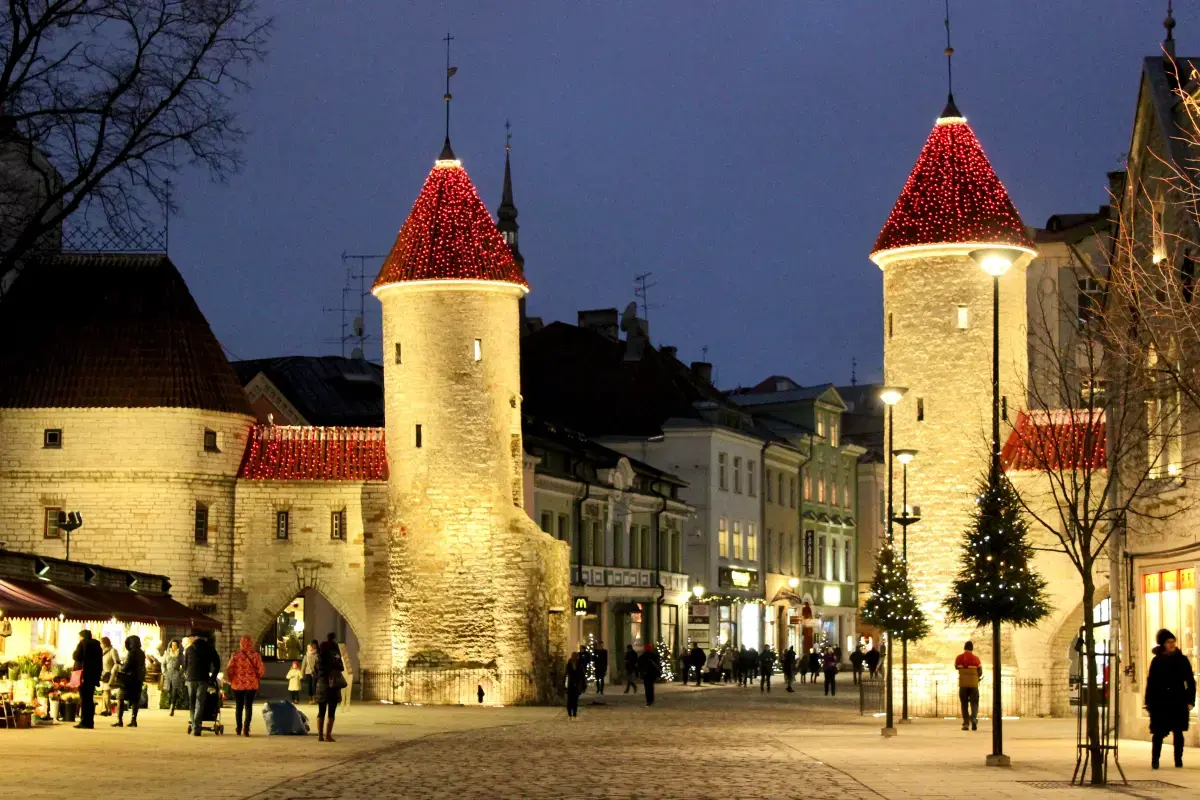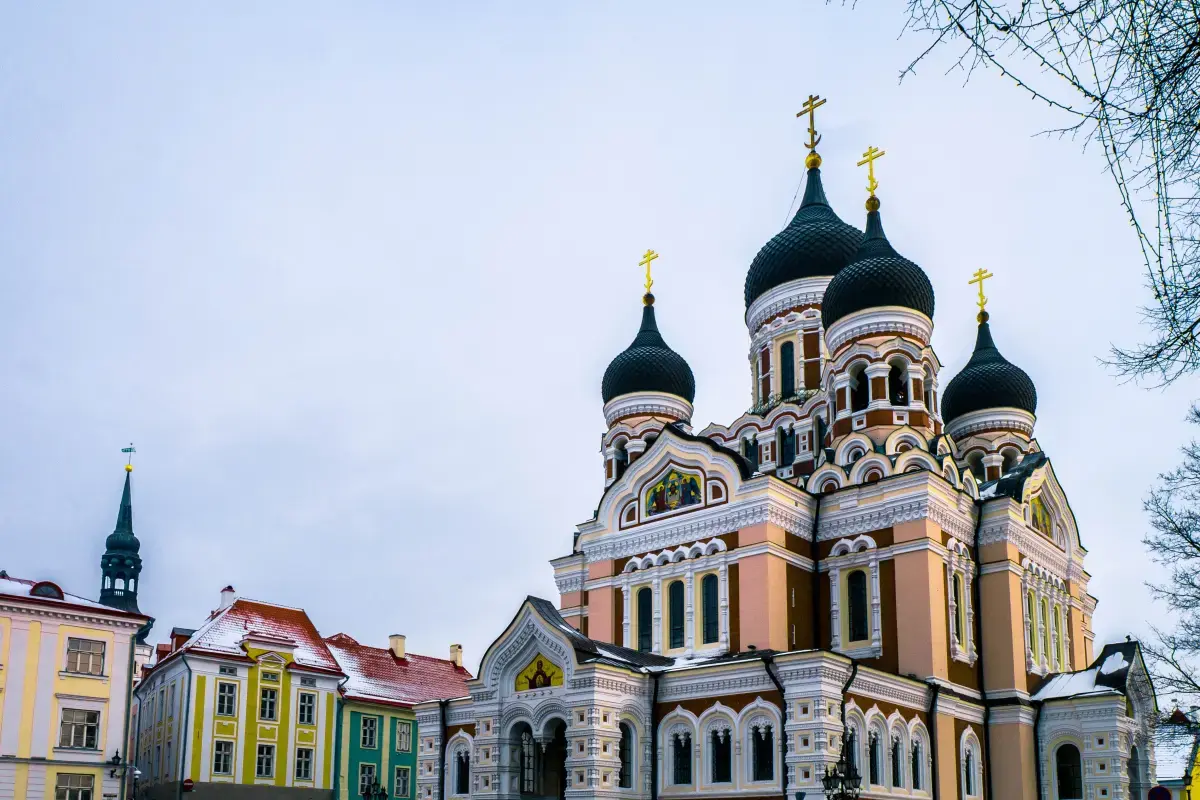- Anesthesiologist
- Obstetrician and Gynecologist
- Psychiatrists
- Surgeons
- General Internal Medicine
- Physicians
- Ophthalmologists
- Orthodontist
- Product Manager
- Artificial Intelligence & Machine Learning (AI/ML) Engineer
- Full-Stack Developer
- Cloud Architect
- DevOps Engineer
- Blockchain Engineer
- Software Architect
- Big Data Engineer
- Internet of Things (IoT) Solutions Architect
- Data Scientist
- Cyber Security Architect

Moving to Estonia in 2025
Step by step guide on migrating and relocating to Estonia in 2025?
Use our Guide to find all the moving information you may need if you are thinking of moving or working in Estonia.
People relocate and move to Estonia for a number of reasons. Estonia is known for its high quality of life, excellent educational system, vibrant culture, and high rates of economic growth. Estonia is a member of the EU and has a highly educated labor force and competitive business environment. As such, its economy is one of the most prosperous in the Baltic region. Relocating to Estonia can open up a world of opportunity for people who want a fresh start. Estonia is a small country but offers plenty of advantages to those looking to relocate. Its convenient location allows people to access other European destinations easily and make it an ideal destination for people who want to take advantage of new business opportunities or make a new life abroad. Estonia also has a modern and advanced healthcare system that is accessible to everyone. This means that relocating to Estonia is an attractive proposition for those who require extended medical care and treatments that is hard to come by in other parts of the world. The country also has a number of vibrant cities, such as Tallinn and Tartu, where there are plenty of activities and events to enjoy. For those who are into sports, there are also many world-class stadiums and parks for recreational activities. In addition to all these benefits, relocating to Estonia can also help people save money in the long run. The cost of living in Estonia is generally lower than what you would find in many other parts of the world. This means that you can enjoy a comfortable and affordable lifestyle while living in Estonia. The taxation system is also quite favorable and can help individuals and businesses save money over time.

Gigs
Cost of Moving to Estonia
1. Visa & Residence Permit: Depending on the reason for your move, you will need to apply for either a short stay visa or a residence permit. The short-term visa allows you to stay in Estonia for up to 90 days and can cost anywhere between 30-60 EUR. If you need to stay in Estonia for longer than 90 days, you will need to apply for a residence permit. The cost for this permit depends on the type of residence permit but ranges from 200-320 EUR. 2. Immigration: Depending on the length of your stay, you may need to register with the Estonian Migration Office. The registration is free but necessary for foreigner to stay or work in Estonia for more than six months. 3. Accommodation: Accommodation costs in Estonia vary greatly depending on your needs and location. Accommodation prices for a one-bedroom apartment in the city center can range from 400-1000 EUR per month. If you opt for shared accommodation or are living outside the city center, you may find cheaper options. 4. Cost of living: The cost of living in Estonia is relatively affordable. Essential groceries such as bread, milk, and eggs can cost anywhere between 15-25 EUR. Monthly utility bills can range from 40-100 EUR depending on your consumption. 5. Travel & Transportation Costs: If you are not already living in Estonia, you may need to consider how you will travel to the country. Depending on your budget, you may opt to fly, ride a ferry, or take a bus. Travel costs vary greatly depending on what mode of transport you choose as well as your point of origin. As for transportation within Estonia, there are public bus and train options available. The fare varies depending on the destination and generally starts at 0.30 EUR for one ticket. 6. Taxes: All individuals living in Estonia must pay taxes, regardless of their income or citizenship status. Non-residents who earn income in Estonia may also be subject to taxes. The amount of taxes you have to pay will depend on your personal circumstances. 7. Healthcare: Expats are required to have health insurance if they are residing in Estonia for more than 90 days. Health insurance plans in Estonia range from approximately 10-60 EUR per month.

Jobs
Best Jobs in Estonia
The most popular jobs that migrants moving to Estonia apply for include IT and software development, engineering, and education. These jobs have the potential for high salaries, with software developers fetching salaries in the range of € 1500–2500 per month, software engineers earning € 2000–3000 per month and teachers earning € 300–550 per month. IT and software development would be a top choice for most migrants, as Estonia is renowned for its tech industry and advancements in the ICT sphere. In particular, government-backed initiatives such as e-residency, digital society, and e-government have generated much interest amongst international migrants. These roles range from website and software developers to more specialized roles such as AI, cloud and machine learning experts. Engineering jobs are also in demand in Estonia, with mechanical and electrical engineering, as well as construction posts being highly sought-after. While these jobs typically pay less than IT professionals, they can still earn a respectable wage of € 1000–1800 per month, depending on experience and skillset. Finally, teaching is also a popular job amongst many migrants as Estonia has a very high level of education, with university-level courses becoming increasingly accessible to international students. Teachers in Estonia can expect to earn around € 300–550 per month. In comparison to the rest of Europe, Estonia offers wages very competitive for many of these jobs, making the country an attractive choice for many migrants.

Volunteers
Weather in Estonia
Estonia has a temperate climate with four distinct seasons. Spring is usually cool and damp, and temperatures range from April frosts to balmy May days. Summer, from June to August, is usually warm and sunny with occasional light rains; temperatures range from 19-21°C (66-70°F). Autumn brings cooler temperatures and longer nights and winter is cold and snowy with frequent frosts; temperatures range from -7-4°C (19-39°F). The west coast of Estonia experiences the greatest amount of rainfall throughout the year, with up to 700mm (27.5 inches) of average annual precipitation. On the east coast, rainfall is much lower and the weather tends to be drier and sunnier, with more days with clear sky and sunshine. Estonia has a continental climate with short warm summers and long cold winters. The warmest months are June through August, when temperatures reach 20-22°C (68-71°F). Winters tend to be cold and wet, with temperatures hovering around 0°C (32°F). The seasonal differences are accentuated by the harsh climatic shift from summer to winter. Overall, the weather in Estonia is unpredictable and can be subject to sudden changes. As such, travelers should prepare for the unexpected and be wary of updating forecasts.

Promote
Tax & Welfare System in Estonia
The tax system in Estonia is a "flat tax system," meaning it has a flat income tax rate of 20% for individuals and corporate entities. This applies to any form of income, from salaries and wages, to investments, interest and dividends. The capital gains tax rate is 14%. Social tax or Social Security contributions for employees and employers is 33%. Value-added tax (VAT) is 20%, and there are exemptions for some goods and services. The Estonian social welfare system offers a broad range of benefits to people who have a declared income in Estonia. This includes unemployment benefits, housing allowance, family benefits, and child benefit. The pension system is funded by both employees and the state, and there are several additional programs in place to provide additional aid to those in need. For unemployed individuals looking for work, the government of Estonia offers a Jobseekers Allowance, which includes income and housing support. For those with an income in Estonia, they can apply for several types of social support benefits, including: basic social benefits, medical benefits, pension benefits, and family benefits. There are also income-related tax credits that lower an individuals tax rate. Finally, there are additional social services, such as childcare, housing aid, and disability allowance, available to those in need.

Holidays in Estonia
The national holidays of Estonia are: New Years Day (1 January) Independence Day (24 February) Good Friday (the Friday before Easter) Easter (April/May) May Day (1 May) Mothers Day (Second Sunday in May) Day of Restoration of Independence (20 August) Christmas Eve (24 December) Christmas Day (25 December) Boxing Day (26 December) New Years Eve (31 December) These are the official holidays in Estonia as legislated by the government. There are also some unofficial holidays or days of celebration observed by families and communities, such as St. Johns Day (Midsummers Eve, 23 June) and Jaanipäev (23 June).

Where to Live in Estonia
The most densely populated areas of Estonia are in the capital city of Tallinn and its suburbs. This region is home to around 40% of the national population. Outside the capital region, nearby cities such as Tartu, Viljandi, and Pärnu are also densely populated. In terms of jobs, Tallinn is the main hub of the country, hosting many large companies and multinationals. Here, a variety of service and manufacturing-related jobs are available. The second largest employer, in terms of jobs, is the government, with many positions available across the country in various departments. Small business and startups also often have job postings in Estonia, and many positions require knowledge of the local language. The third largest employer is the tourism industry, which is growing rapidly and offers numerous positions in the hospitality sector. In addition, cities such as Viljandi, Tartu, and Pärnu have their own industrial areas and employment opportunities for skilled workers. Here, many manufacturing jobs can be found, as well as service sector positions. Overall, Estonia is experiencing steady economic growth and it is still developing, meaning there are plenty of opportunities to find employment.

Sports & Recreation in Estonia
Estonia is a small Nordic country located on the shores of the Baltic Sea in Northern Europe. Its an outdoor-oriented country with an array of popular sports and recreational activities available for citizens and visitors to enjoy. Popular sports and recreational activities in Estonia include cycling, hiking, swimming, sailing, canoeing, kayaking, skiing, fishing, ice-skating, snowshoeing, cross-country skiing, and birdwatching. Cycling: Cycling is a popular sport and pastime in Estonia, with dedicated routes and trails around the country. The national touring cycle route, covering more than 1,700 km (1,056 mi), runs the length of the Estonian mainland, offering an excellent way to explore the country and its natural beauty. In addition, many cities and towns have local bike paths, making cycling a fun and convenient way to get around. Hiking: Estonia is home to a great number of beautiful forests, parks, and trails, making it a popular destination for visitors who enjoy outdoor activities. Hikers can explore Estonia’s stunning landscapes and its vast network of trails and paths. Popular trails include the Karula National Park, the Lahemaa National Park, and the Valgeranna Nature Boardwalk. Swimming: Estonia has a number of beautiful beaches, making it an ideal spot for a pool or beach holiday. Popular beaches include those along the Baltic Sea in the resorts of Pärnu, Kuressaare and Haapsalu, as well as the vibrant lakes of Lake Ülemiste and Lake Peipus. Swimming, boating, and other watersports can be enjoyed on these water bodies. Sailing: Estonia has an abundance of attractive sailing spots, including some of the Baltic Seas most picturesque islands. From the larger coastal towns of Tallinn and Pärnu, sailing enthusiasts can explore the rugged coastlines and smaller islands in the vicinity. The larger islands of Saaremaa, Hiiumaa, and Vormsi also offer plenty of opportunities for sailing and exploring. Canoeing and Kayaking: Estonia is home to many pristine rivers and lakes where canoeing and kayaking can be enjoyed. From the capital Tallinn, canoers and kayakers can explore the River Pärnu and its tributaries, or take part in a guided tour to the sprawling Lahemaa National Park. Lake Peipus, with its crystal-clear waters, is especially popular among kayakers. Skiing: Skiing and snowboarding are favorites among Estonians, with ski resorts located throughout the country. Popular ski resorts include the Otepää Ski Stadium, the Järva-Jaani Ski Stadium, and the Sogla Ski Stadium. These resorts offer trail systems and activity centers suitable for a variety of skill levels. Fishing: Fisheries and lakes, rivers and streams across Estonia offer a range of fishing opportunities and experiences. From fly fishing in spring-fed streams to carp fishing on Estonia’s larger lakes and rivers, anglers can pursue a number of fish species, including pike, perch, and lake trout. Ice Skating: Ice-skating is a popular wintertime activity for both children and adults in Estonia. Popular skating rinks include those in the capital Tallinn, as well as Pärnu, Narva, and Tartu. Ice-skating can be enjoyed by members of the public over the winter months. Snowshoeing: Snowshoeing is a great way to explore the more remote parts of Estonia and its winter landscapes. Popular snowshoeing trails include those in the Karula National Park, the Valgeranna Nature Boardwalk, and the Lahemaa National Park. Cross-Country Skiing: Cross-country skiing is another popular winter activity in Estonia. Ski trails can be found at the Otepää and Järva-Jaani ski stadiums, in addition to several national parks and nature reserves. Birdwatching: Birdwatching is recognized as one of the top bird-watching sites in Europe. One of the most popular areas for birdwatching is the Vormsi Island, which is home to hundreds of different species of birds. Additionally, birdwatchers can explore many of the national parks and nature reserves throughout the country, which are home to a variety of birds.

Cost of Living & Housing in Estonia
The cost of living and housing in Estonia is generally low compared to other countries in Europe. The low cost of living makes Estonia one of the more affordable countries to live in Europe. Housing costs in Estonia are quite affordable when compared to other European countries. The average price for a one bedroom apartment in Estonias capital of Tallinn is around €400-500 per month. Small apartments in residential areas can be even lower. Prices for larger apartments, houses and villas vary widely depending on the location and size of the property. The cost of utilities and other day-to-day expenses in Estonia are also quite affordable. Basic groceries, such as bread, milk, eggs, and fruits, can generally be purchased for about €50-60 per week for a family of four. Internet service also tends to be quite reasonable, with some providers offering monthly service for as little as €15 per month. Overall, the cost of living and housing in Estonia can be quite affordable depending on your needs and preferences. With low rents, reasonable utility prices and a moderate amount of money for day-to-day expenses, living in Estonia can be an affordable option for many people.

Finding a Job in Estonia from Overseas as a Foreigner?
Use our Job hunting & job seeking guide to help your job searching easier.

The Best Rated Top 20 Recruitment Agencies in Estonia
When searching for a Job from Overseas, reaching out to established Recruitment Agencies can help in your Job Search in Estonia

What are the Best job boards in Estonia
Jobseekers searching for jobs in Estonia find the below job portals in in Estonia as the best job websites for finding employment in in Estonia
Best International Removals Companies to/from Estonia
When the move to Estonia gets closer, finding local and international removals companies that suit your requirements are critical. Find a list of the best companies Near You.

Expat info about living in
Don't just take our word for it.
Use the Best Forums in Estonia to obtain all the independent advise about moving, living & working in Estonia

Immigration Advice and Visa InformationEstonian
Need assistance with obtaining the correct Visas and Work Permits in Estonia.
- Get expert advice to make the move to Estonia as easy as possible

Find Trusted Local Home Services
When you arrive, understanding the Best Local Services to help with your odd jobs and tasks around the home is essential.

Best Areas to Live in Estonia
Popular towns, cities and regions that are proving popular with migrants moving to Estonia
Study and Higher Education in Estonia
Search our list of all universities in Estonia to help your reach your educational goals.
- Find the Best University in Estonia that suits your needs

Featured Locations
Frequently Asked Questions
- Construction
- Business Analysis
- Web & App Development
- Animation
- Nursing
- Teaching
- Engineering
- Marketing
- Plumbing
- Carpentry
- Software Engineer
- Data Analyst
- Hospitality Staff
- Builders
- Full-time
- Part-time
- Permanent
- Freelance
- Gig Jobs
- Contract
- Weekend work
- Out of Hours
- Night shift
- Casual
- Temporary
- Remote
- Work From Home
- Work From Anywhere
- Telecommuting
- Flexible
See here for more Help & Support questions



